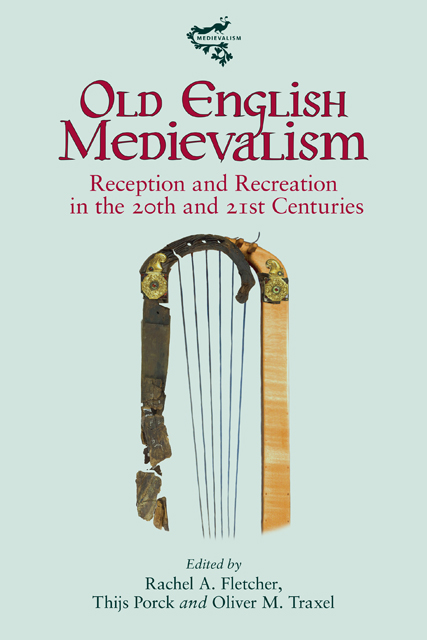Book contents
- Frontmatter
- Contents
- List of Illustrations
- List of Contributors
- Acknowledgements
- List of Abbreviations
- Early Medieval English in the Modern Age: An Introduction to Old English Medievalism
- I Reinventing, Reimagining and Recontextualizing Old English Poetry
- II Invoking Early Medieval England and Its Language in Historical Fiction
- III Translating and Composing in Neo-Old English
- IV Approaching Old English and Neo-Old English in the Classroom
- Bibliography
- Index
- Medievalism
5 - Creating a ‘Shadow Tongue’: The Merging of Two Language Stages
Published online by Cambridge University Press: 17 December 2022
- Frontmatter
- Contents
- List of Illustrations
- List of Contributors
- Acknowledgements
- List of Abbreviations
- Early Medieval English in the Modern Age: An Introduction to Old English Medievalism
- I Reinventing, Reimagining and Recontextualizing Old English Poetry
- II Invoking Early Medieval England and Its Language in Historical Fiction
- III Translating and Composing in Neo-Old English
- IV Approaching Old English and Neo-Old English in the Classroom
- Bibliography
- Index
- Medievalism
Summary
Introduction
the night was clere though i slept i seen it. though i slept i seen the calm hierde naht only the still. when i gan down to sleep all was clere in the land and my dreams was full of stillness but my dreams did not cepe me still
The first paragraph of Paul Kingsnorth’s historical novel The Wake immediately confronts the reader with its rather specific language. It is obviously written in a curious sort of English; it contains many forms commonly found in modern standards, but there are also several spellings and grammatical constructions that give it a rather unusual character. These occurrences can be linked to the setting of the novel: it takes place in England during the years 1066–8 and is intended to reflect some of the linguistic features that were used in late Old English. Roberto Calas, another writer of historical fiction, has commented on the risks involved with having the language conform to the medieval setting of a historical novel:
Writing a medieval novel using only the language from the middle ages (even limited to dialog), would be asinine. […] No one would understand a book written that way. I understand adding medieval flavor to a book. I get that. I do a lot of that myself. And I understand making an effort to avoid expressions that are too modern, another goal of mine. But let’s face it, we aren’t going to write a book in Old English or even Middle English. And most writers don’t know enough about the language of that time period to make a convincing stab at it. My argument is that historical language should yield to clarity.
Seemingly less interested in ‘clarity’, Kingsnorth went to greater lengths to add ‘flavor’ to his historical novel and created a ‘pseudo-language intended to convey the feeling of the old language [Old English] by combining some of its vocabulary and syntax with the English we speak today’. He termed the result ‘shadow tongue’ and even provided both an outline of its principal linguistic features in his ‘note on language’ and a ‘partial glossary’ to assist the reader. His ultimate aim was to ‘convey […] through the words of the characters, the sheer alienness of Old England […] a place at once alien and familiar’.
- Type
- Chapter
- Information
- Old English MedievalismReception and Recreation in the 20th and 21st Centuries, pp. 95 - 114Publisher: Boydell & BrewerPrint publication year: 2022



